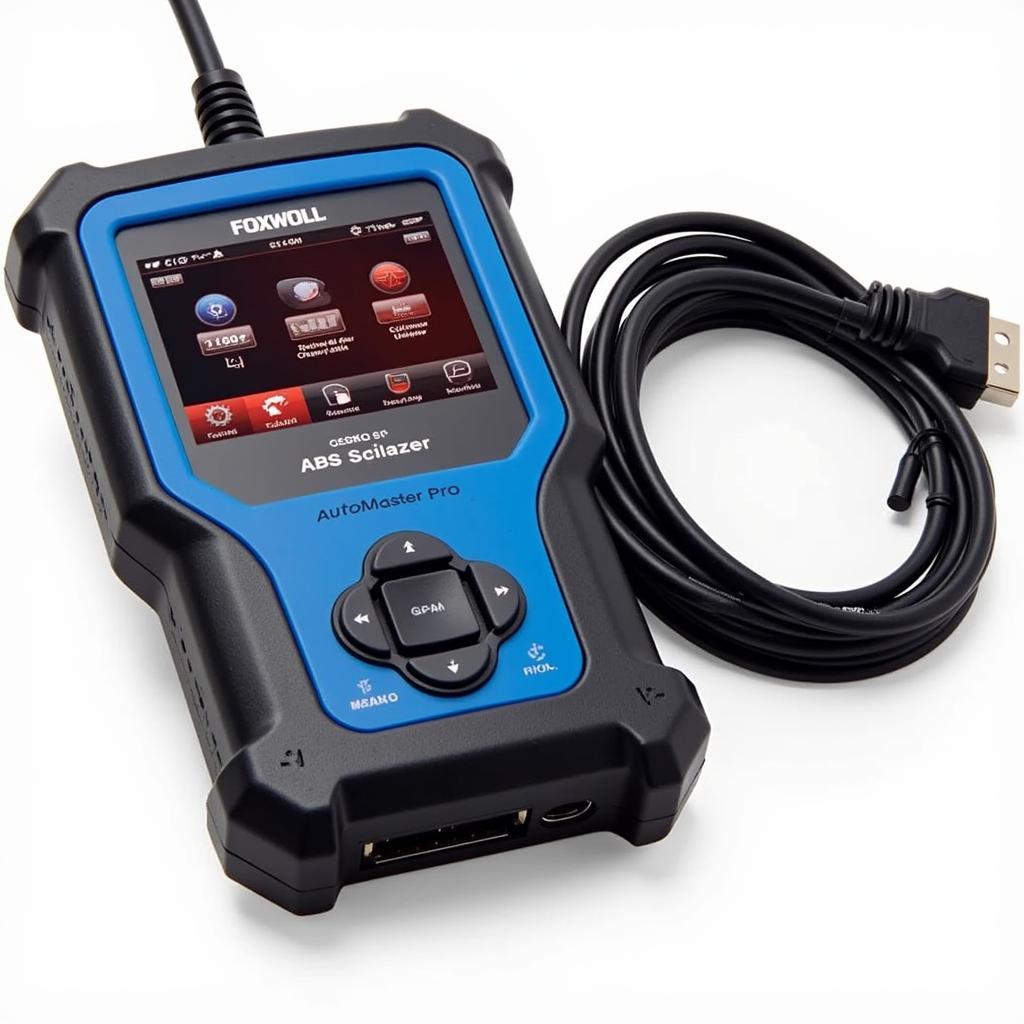The Foxwell NT 301 OBD2 scanner is a powerful tool for car owners and mechanics alike. However, navigating through the Polish instructions (Foxwell Nt 301 Instrukcja Pl) can be challenging for some. This guide is here to simplify things, providing a comprehensive understanding of your Foxwell NT 301 and how to use it effectively.
Understanding Your Foxwell NT 301: A Powerful Ally in Car Diagnostics
Your Foxwell NT 301 is more than just a code reader; it’s a comprehensive diagnostic tool that empowers you to understand your car’s health. It allows you to:
- Read and Clear Codes: Identify and clear diagnostic trouble codes (DTCs) stored in your car’s computer, which illuminate the check engine light.
- View Live Data: Monitor real-time sensor data, such as engine RPM, coolant temperature, and oxygen sensor readings, to diagnose issues while driving.
- Perform Component Tests: Activate specific components like solenoids or relays to test their functionality.
- Reset Service Lights: Turn off maintenance reminders, such as the oil change or service engine soon light, after completing scheduled services.
Getting Started: Connecting and Navigating Your Foxwell NT 301
Before diving into the diagnostics, you need to connect your Foxwell NT 301 to your car’s OBD2 port. This port is usually located under the dashboard on the driver’s side. Once connected, power on your car and the scanner. You’ll be greeted with the main menu. The menu is intuitive and easy to navigate, even if you’re not fluent in Polish. Here’s a quick breakdown:
- Diagnose: Select this option to access the main diagnostic functions, including reading and clearing codes, viewing live data, and performing component tests.
- Review Data: This section allows you to review previously saved diagnostic data.
- Setup: Adjust settings like language, units of measurement, and display options.
Troubleshooting with Your Foxwell NT 301: A Step-by-Step Approach
Let’s walk through a common scenario: your check engine light is on.
- Read the Codes: Go to “Diagnose” and select “Read Codes.” The NT 301 will retrieve and display the trouble codes stored in your car’s computer.
- Understand the Codes: Each code is a combination of letters and numbers, representing a specific issue. You can search online for the code definition or refer to the Foxwell NT301 Instrukcja PDF for a detailed explanation.
- Diagnose the Issue: Use the “Live Data” function to monitor relevant sensor readings and pinpoint the root cause. For example, if the code indicates an oxygen sensor problem, observe the oxygen sensor readings in real-time.
- Fix the Problem: Once you’ve identified the issue, address it by replacing faulty components, repairing wiring, or addressing any underlying mechanical problems.
- Clear the Codes: After fixing the problem, go back to “Diagnose” and select “Clear Codes” to erase the trouble codes and turn off the check engine light.
“Using the Foxwell NT 301, I was able to diagnose a faulty oxygen sensor in my car,” shares Tomasz, a mechanic from Warsaw. “The live data helped me confirm my suspicions, saving me time and unnecessary part replacements.”
Beyond Basic Diagnostics: Unleashing the Full Potential of Your Foxwell NT 301
The Foxwell NT 301 offers more than just basic code reading and clearing. Here’s how you can delve deeper:
- Component Testing: Utilize the “Component Test” function to activate individual components, such as fuel injectors or ignition coils, to verify their operation.
- Resetting Service Lights: After performing regular maintenance like oil changes, use your NT 301 to reset the service light reminders.
- Vehicle-Specific Functions: The NT 301 supports certain vehicle-specific functions, such as Electronic Parking Brake (EPB) service reset or Steering Angle Sensor (SAS) calibration. However, these features may vary depending on the car make and model.
Foxwell NT 301: Empowering Car Owners and Mechanics in Poland
The Foxwell NT 301, coupled with a good understanding of the “Foxwell NT 301 Instrukcja PL,” can be an invaluable tool for anyone in Poland who wants to take control of their car maintenance or enhance their diagnostic capabilities.
“I used to dread the check engine light,” says Anna from Krakow, a Foxwell NT 301 user. “But now, with the NT 301, I feel empowered. I can quickly identify the problem and address it without relying solely on mechanics.”
By mastering your Foxwell NT 301, you can save time, money, and potentially avoid unnecessary repairs. You’ll gain a deeper understanding of your car’s health, ensuring it runs smoothly for years to come.
FAQs about Foxwell NT 301
Q: Does the Foxwell NT 301 support all car makes and models?
A: The NT 301 supports a wide range of OBD2 compliant vehicles (manufactured from 1996 onwards). However, it’s always recommended to check compatibility with your specific car model on the Foxwell Inc website.
Q: Can I update the software on my Foxwell NT 301?
A: Yes, the NT 301’s software can be updated via a computer to access the latest features and vehicle coverage.
Q: Is the Foxwell NT 301 suitable for professional mechanics?
A: While a valuable tool for car owners, the NT 301 is designed as a DIY-friendly scanner. Professional mechanics may require more advanced diagnostic tools from Foxwell with additional functionalities.
Need assistance with your Foxwell NT 301 or have more questions? ScanToolUS is here to help! Contact us at +1 (641) 206-8880 or visit our office at 1615 S Laramie Ave, Cicero, IL 60804, USA.



Pingback: Which Foxwell Will Reset the Oil Light? A Comprehensive Guide - Car Scan Tool